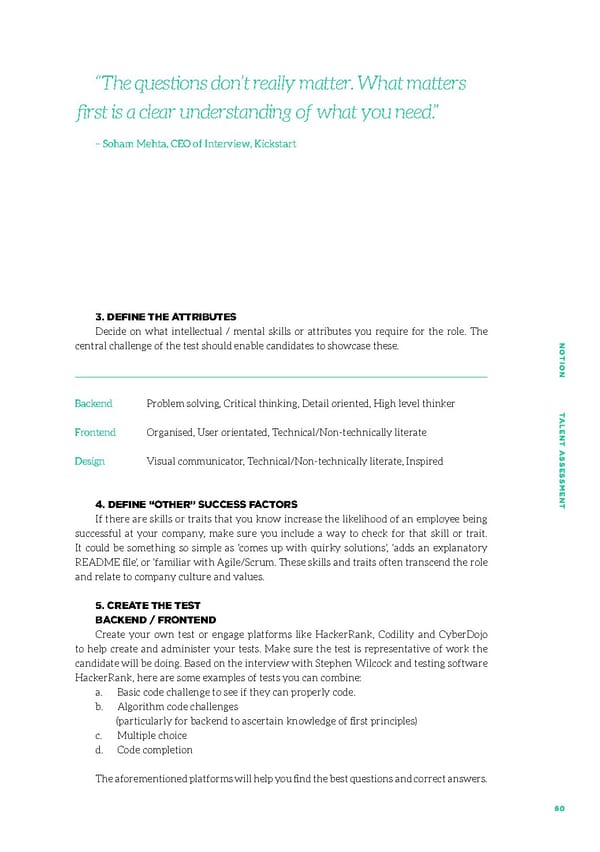“The questions don’t really matter. What matters first is a clear understanding of what you need.” – Soham Mehta, CEO of Interview, Kickstart 3. DEFINE THE ATTRIBUTES Decide on what intellectual / mental skills or attributes you require for the role. The central challenge of the test should enable candidates to showcase these. NONO TION TTION T Backend Problem solving, Critical thinking, Detail oriented, High level thinker ALENT AALENT A Frontend Organised, User orientated, Technical/Non-technically literate SS Design Visual communicator, Technical/Non-technically literate, Inspired SESSES SMENTSMENT 4. DEFINE “OTHER” SUCCESS FACTORS If there are skills or traits that you kno w increase the likelihood of an employee being successful at your company, make sure you include a way to check for that skill or trait. It could be something so simple as ‘comes up with quirky solutions’, ‘adds an explanatory README file’, or ‘familiar with Agile/Scrum. These skills and traits often transcend the role and relate to company culture and values. 5. CREATE THE TEST BACKEND / FRONTEND Create your own test or engage platforms like HackerRank , C odility and CyberDojo to help create and administer your tests. Make sure the test is representative of work the candidate will be doing. Based on the interview with Stephen Wilcock and testing software HackerRank, here are some examples of tests you can combine: a. Basic code challenge to see if they can properly code. b. Algorithm code challenges (particularly for backend to ascertain knowledge of first principles) c. Multiple choice d. Code completion The aforementioned platforms will help you find the best questions and correct answers. 6060
 Talent Assessment for Growth Startups Page 56 Page 58
Talent Assessment for Growth Startups Page 56 Page 58